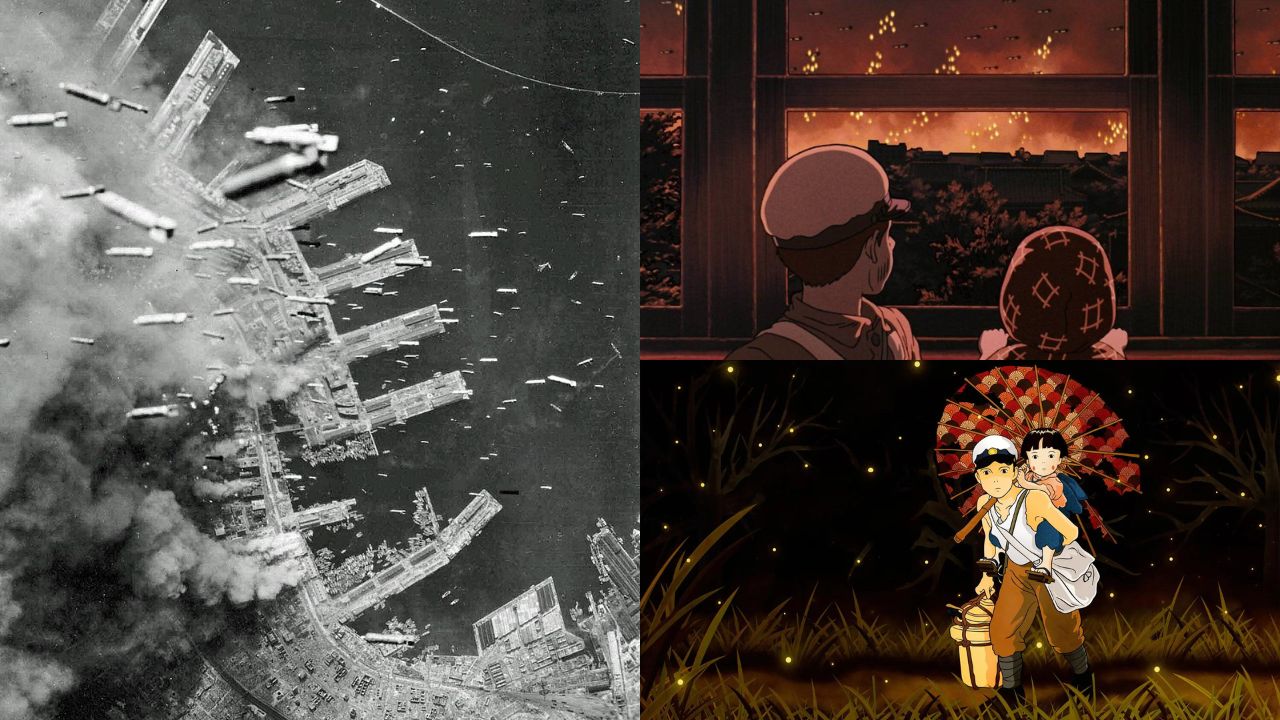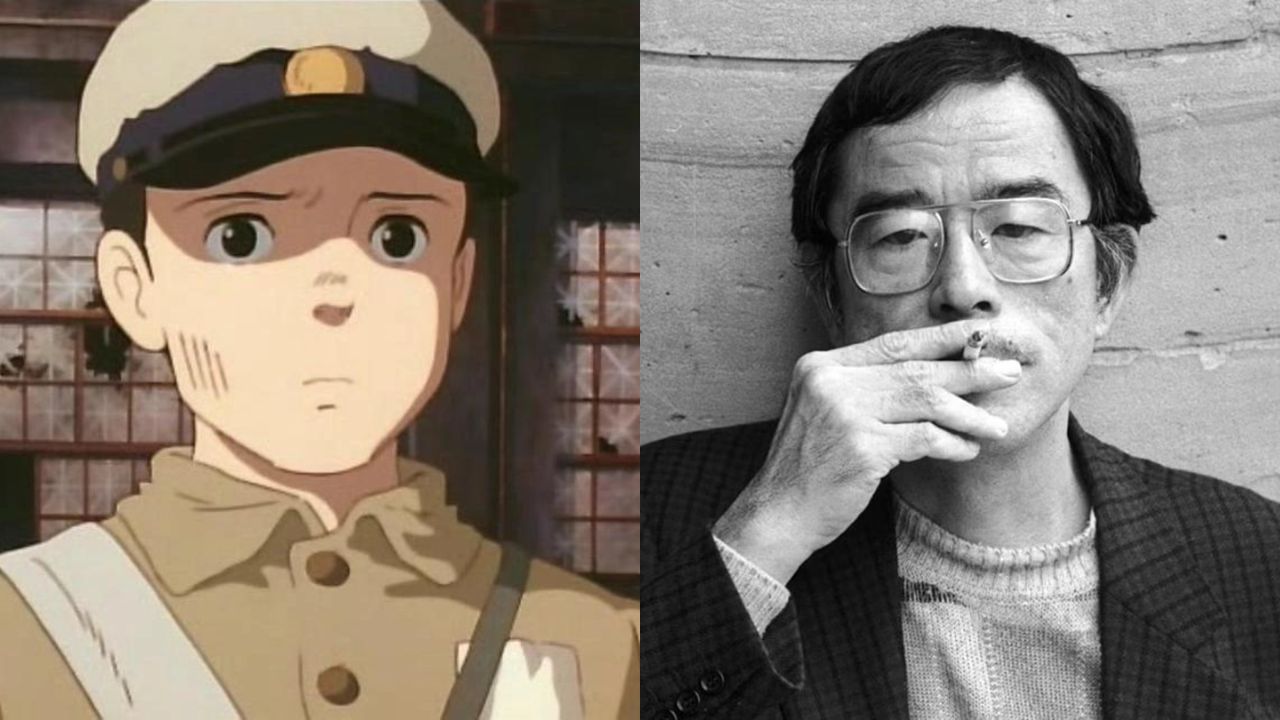This article focuses on the true story behind the 1988 animated film “Grave of Fireflies”. It explores the real-life events that inspired this poignant and tragic tale.
The “Grave of the Fireflies” is a 1988 Japanese animated war film directed by Isao Takahata. It’s about two Japanese siblings, Seita and Setsuko, who lose their home and family during World War II. They try their best to survive in a war-torn country. In the process, the siblings face hunger, disease and cruelty from others. “Grave of the Fireflies” shows the horrors of war through the eyes of innocent children and the bond of love/sacrifice between them.
Note: For those who are interested, here is another article discussing the meaning behind the ending of “Grave of the Fireflies”.
The True Story Behind “Grave of the Fireflies”
It turns out that the 1988 animated film is not merely a work of fiction. The story is rooted in the real-life experiences of Akiyuki Nosaka. He is the author of the semi-autobiographical short story on which the film is based. Nosaka was a survivor of the Kobe bombings during World War II, a brutal attack that led to the loss of several of his family members.

Japan and World War II
During the conflict, there were two opposing military alliances in the world: the Axis and the Allies. The global war started in 1939 and lasted until 1945.
The Axis refers to the alliance of the countries that started the war: Germany, Italy and Japan. On the other hand, the Allies refer to the countries that were against the war and joined forces to stop it. During World War II, each member of the Axis invaded different parts of the world. In Japan’s case, the country was trying to invade and colonize the entire East Asia.
At the time, Japan was heavily dependent on foreign petroleum, which came mainly from the United States. So, when the western country decided to impose an embargo on all trade between the two countries, it resulted in an economic and military crisis for Japan. In order to compensate for this loss, Japan started to invade Southeast Asia, known for being rich in natural resources.
The imposed trade embargo deteriorated the relationship between the two countries. As a result, Japan attacks Pearl Harbor (without any notice) as a sign of retaliation. By the end of 1941, Japan was officially at war with the United States and the British Empire.
On August 6, 1945, the United States dropped an atomic bomb over the Japanese city of Hiroshima. A couple of days later, Japan surrendered and the war officially ended on September 2, 1945. The first country from the Axis to surrender was Italy (September 3, 1943), followed by Germany (May 7, 1945). Japan was the last country to admit defeat.
The “Bombing of Kobe” in World War II
One of the most significant events in Japan during World War II was the “Bombing of Kobe”, which took place on March 16 and 17, 1945. This was part of the strategic bombing campaign led by the United States against Japan’s military and civilian targets during the final stages of World War II.
Several reasons led to the selection of Kobe, the sixth-largest city in Japan at the time. The highly flammable wooden houses in the city made it ideal for starting large fires. Additionally, Kobe was Japan’s largest port and a major hub for shipbuilding and marine-engine manufacturing. It was also a crucial city for transportation and business, with national highways running through it.
The attack destroyed almost 25% of Kobe’s urban area, led to thousands of residents’ deaths and left more than half a million people homeless. Despite the presence of hundreds of Japanese fighters, no bombers were lost due to the defense.
Reality vs. Fiction
“Grave of the Fireflies” is based on Akiyuki Nosaka’s life. The Japanese author did not grow up with his biological father. Instead, his adoptive father raised him and his sisters. However, the man ended up dying in 1945 during the firebombing of Kobe. During this period, Nosaka also lost his sisters to malnutrition.
In 1967, Akiyuki Nosaka released the novel “Grave of the Fireflies” as an apology to his sisters. Just like the main character, Seita, Nosaka felt guilty for not being able to protect and properly take care of his younger sisters. Despite regretting some of his personal decisions, the author also wanted to emphasize in the book the strong bond and love between siblings.

Nosaka’s personal experiences during the war deeply influenced the narrative of “Grave of the Fireflies”. The characters of Seita and Setsuko are believed to be representations of Nosaka and his sisters. Their struggle in the film portrays the devastating impact of the Kobe bombings and the subsequent struggle for survival faced by many Japanese citizens.
The war led to a scarcity of resources, with food and medicine becoming luxuries that many could not afford. Seita and Setsuko’s hardships portray the harsh realities of war and its impact on human lives and dignity. Nosaka’s personal tragedies and the brutality of World War II form the crux of the “Grave of the Fireflies” true story.
Final Thoughts
“Grave of the Fireflies” is more than just an animated film, it depicts the grim reality of war. The true story behind it serves as a stark reminder of the tragedy of war and its impact on ordinary citizens. It underscores the fact that in the theatre of war, it’s often the innocent who pay the highest price.
The “Grave of Fireflies” true story is a testament to the human spirit’s resilience in the face of adversity. It’s a story of survival, loss, and the indomitable will of two young souls caught in the crossfire of war. Despite being a difficult film to watch because of its sensitive subjects, “Grave of the Fireflies” is a story that should not be forgotten.


